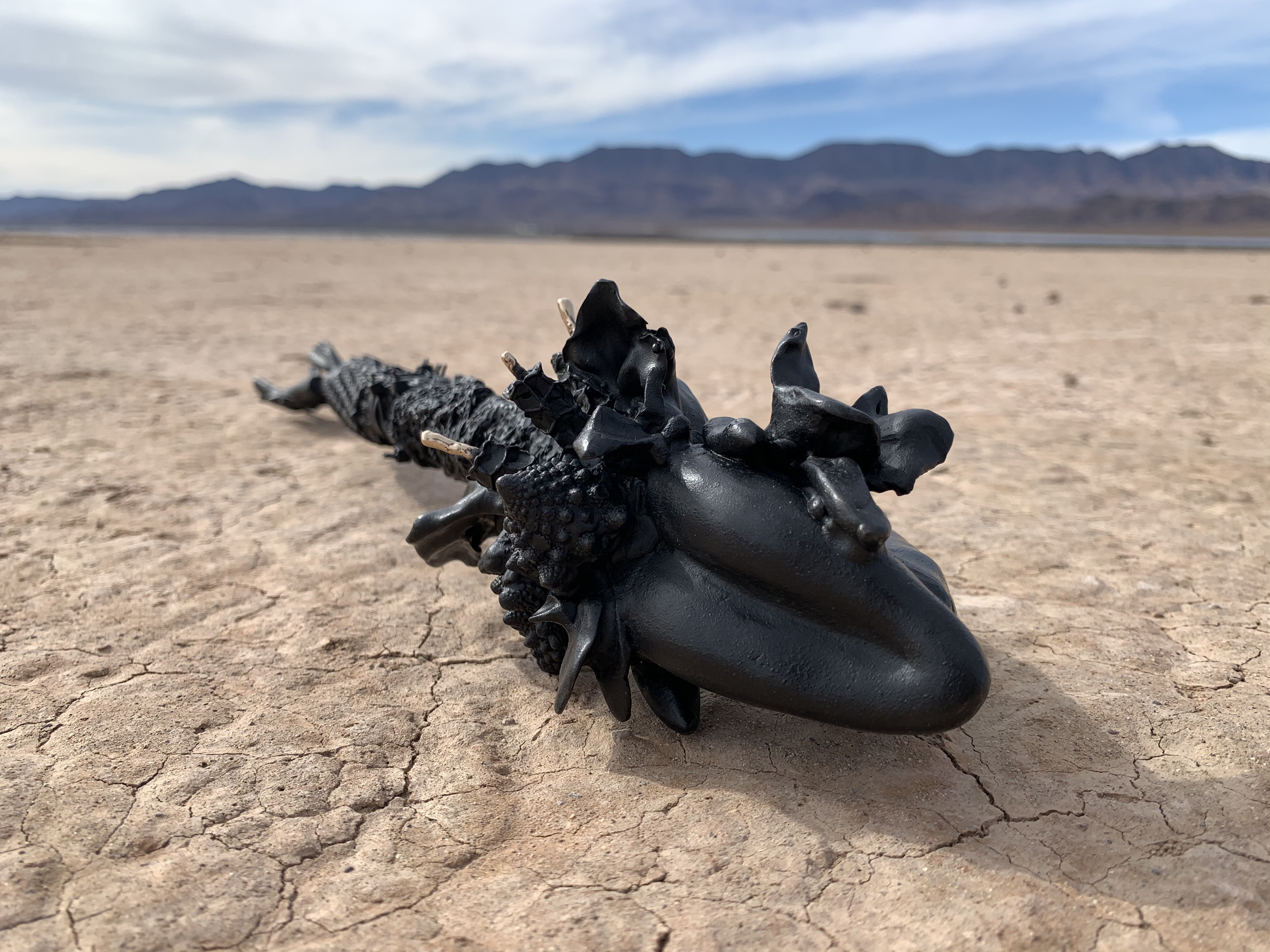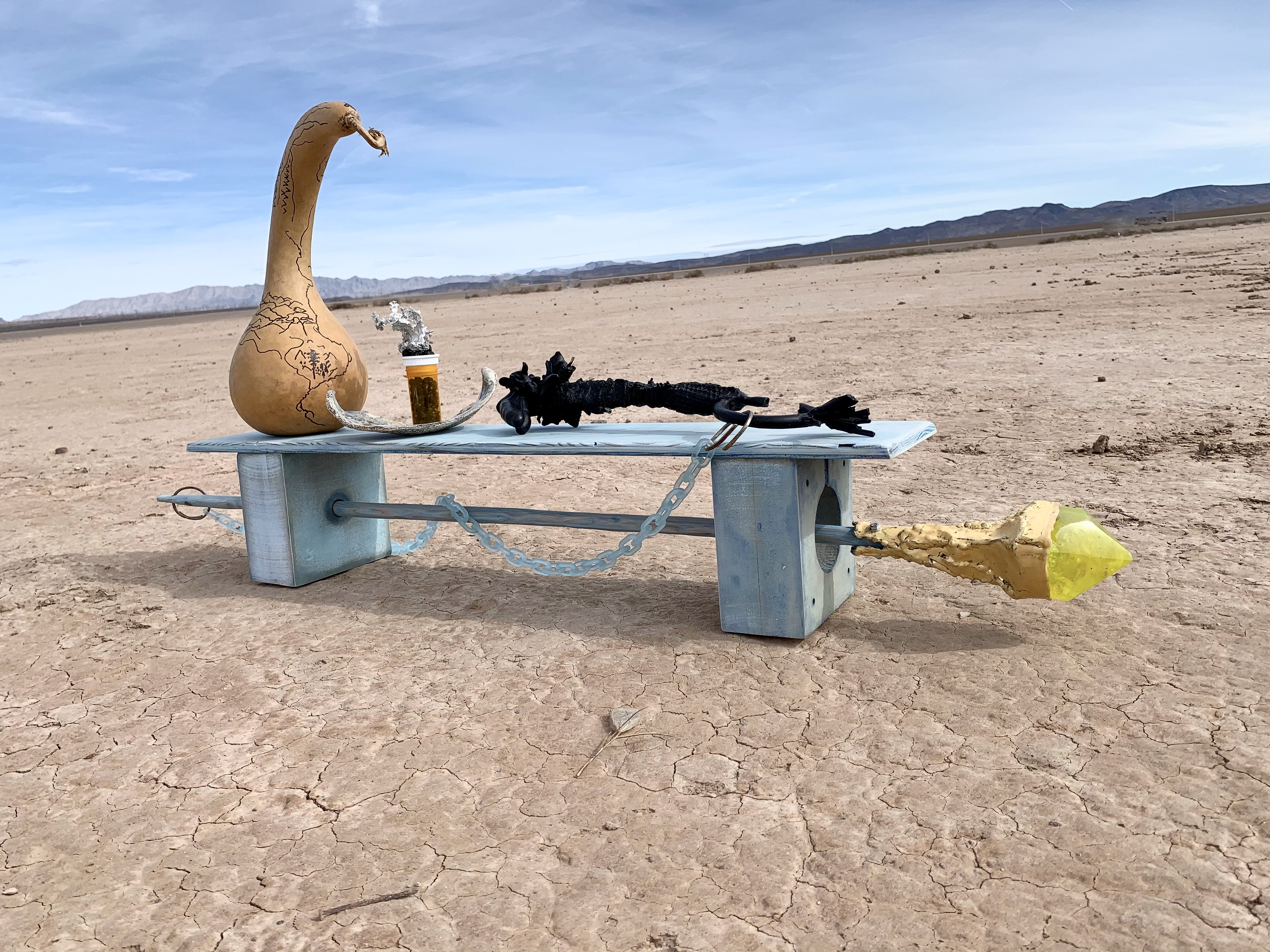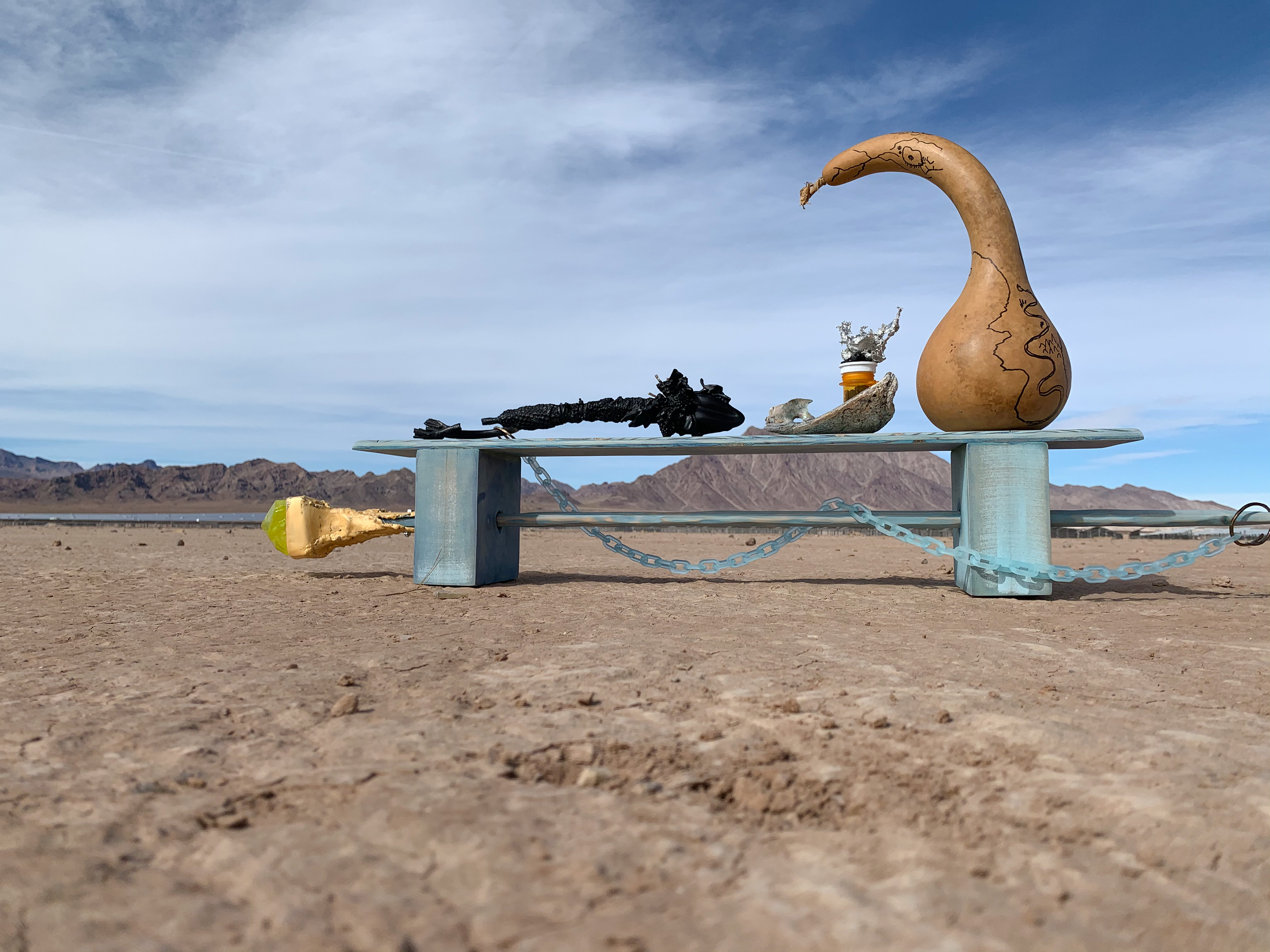Handle for a mace head from Sodom and Gomorrah, Early Bronze Age
Cast bronze, sulphur patina, finished with iron oxide and polished sections.
Geology of Leaving, Artifacts of Fire and Brimstone
Cast bronze handle designed for a stone mace head found at Bâb Edh-Dhrâ (Sodom), with sulphur patina, finished with iron oxide and polished sections, Abalone shell fragment (Sonoma Coast), Rx bottle, obsidian pebbles (Wyoming), tin molybdomancy fortune for 2021 cast in salt water (salinity of the Dead Sea), dried gourd with road maps (Adirondacks-Rockies), Brimstone Orgonite made of resin, mica, broken glass, plastic bag, paintbrush hairs, Selenite dust (Utah) and pigment, LED lights, forged steel with gold leaf and beeswax, forged bronze, acrylic chain, wood, found objects, dyes. Photographed at the Mursha Reservoir dry lake bed outside Las Vegas, NV.
Inspired by a carved stone mace head from Bâb Edh-Dhrâ, an Early Bronze Age city excavated near the Dead Sea and a proposed site of the biblical city of Sodom, I cast a fictional handle for this relic in solid bronze and applied a sulphur patina to reclaim fire and brimstone as agents of change. This collection of artifacts from Sodom and Gomorrah both ancient and present reimagines the story as one of queer escape, protection, and the transcendent landscape of the Dead Sea as inspiration for re-building futures. Excavating multifaceted perspectives as a guide for future survival, I sought material applications that engage with the geology of leaving, gaining strength from the transparency of attachments, the fiery bronze-casting process in its early years, and queer histories lost in time.
Artist Statement
As a lesbian-identifying visual artist, my multidisciplinary work challenges hegemonic interpretations of gender and desire, seeking queer alternatives to heteronormative structures and hierarchies. Having a background in bronze-casting and paleontology, I’m interested in time scale and imagining a queer archaeological record using ancient and transformative casting techniques. Through the lens of deep time, I seek strategies to visualize queerforward experiences and possibilities for escape from the straight world, capture moments of radical transformation, and document the volcanic movement of imminent forces towards change. Reformative monuments, memorials, and artifacts become an act of queer place-making, while mapping out a fluid dreamscape celebrates the latent destinies of genderhood on the brink of nonnormative inevitability.







